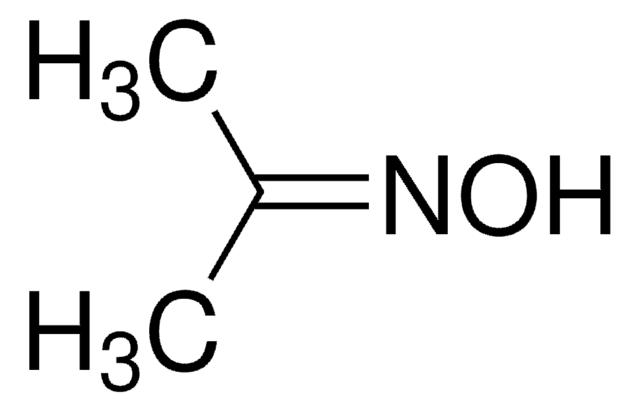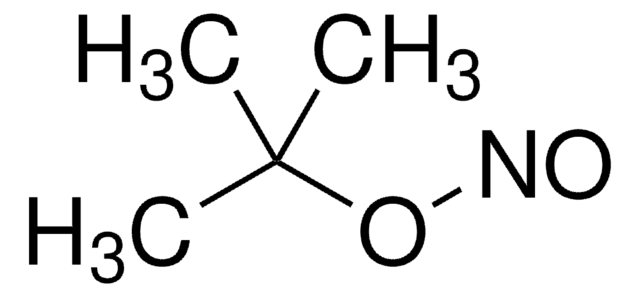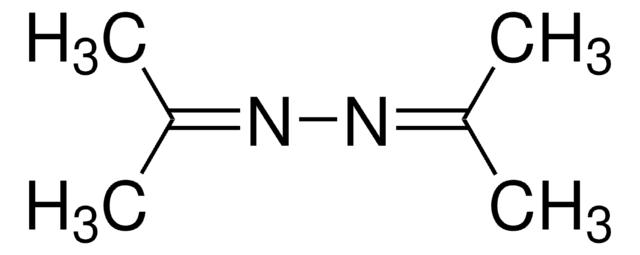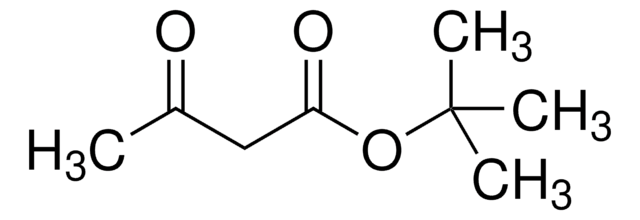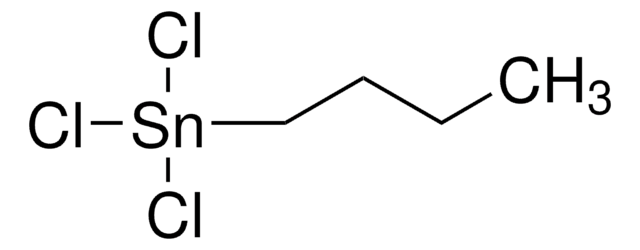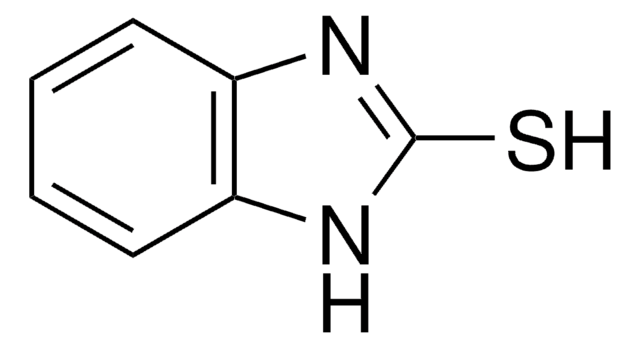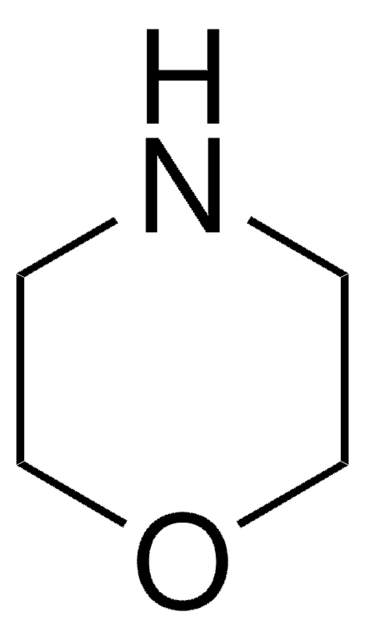332828
2-Butanone oxime
99%
Sinônimo(s):
Methyl ethyl ketoxime
About This Item
Produtos recomendados
densidade de vapor
3 (vs air)
Nível de qualidade
pressão de vapor
<8 mmHg ( 20 °C)
Ensaio
99%
forma
liquid
índice de refração
n20/D 1.442 (lit.)
pb
59-60 °C/15 mmHg (lit.)
solubilidade
water: soluble 100 g/L at 25 °C
densidade
0.924 g/mL at 25 °C (lit.)
grupo funcional
amine
oxime
cadeia de caracteres SMILES
CC\C(C)=N\O
InChI
1S/C4H9NO/c1-3-4(2)5-6/h6H,3H2,1-2H3/b5-4+
chave InChI
WHIVNJATOVLWBW-SNAWJCMRSA-N
Procurando produtos similares? Visita Guia de comparação de produtos
Categorias relacionadas
Descrição geral
Aplicação
Palavra indicadora
Danger
Frases de perigo
Declarações de precaução
Classificações de perigo
Acute Tox. 3 Oral - Acute Tox. 4 Dermal - Carc. 1B - Eye Dam. 1 - Skin Irrit. 2 - Skin Sens. 1 - STOT RE 2 - STOT SE 1 - STOT SE 3
Órgãos-alvo
Blood, Central nervous system, Upper respiratory tract
Código de classe de armazenamento
6.1C - Combustible acute toxic Cat.3 / toxic compounds or compounds which causing chronic effects
Classe de risco de água (WGK)
WGK 3
Ponto de fulgor (°F)
143.5 °F - closed cup
Ponto de fulgor (°C)
61.97 °C - closed cup
Equipamento de proteção individual
Eyeshields, Faceshields, Gloves, type ABEK (EN14387) respirator filter
Escolha uma das versões mais recentes:
Já possui este produto?
Encontre a documentação dos produtos que você adquiriu recentemente na biblioteca de documentos.
Os clientes também visualizaram
Nossa equipe de cientistas tem experiência em todas as áreas de pesquisa, incluindo Life Sciences, ciência de materiais, síntese química, cromatografia, química analítica e muitas outras.
Entre em contato com a assistência técnica